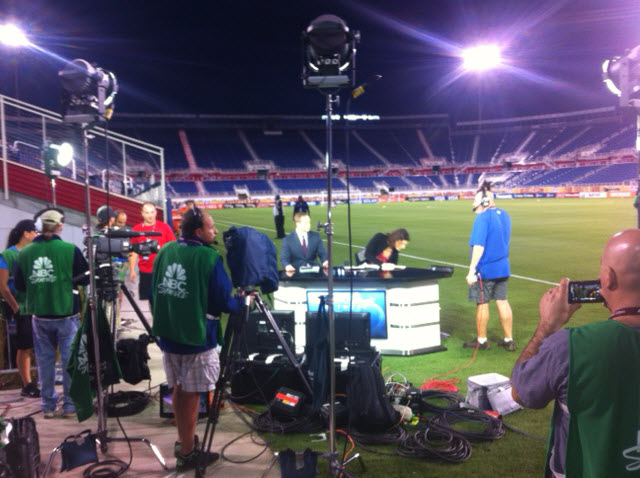When it comes to live TV, you literally only get one chance to make a first impression. Everything is captured exactly as the action happens, meaning that if something goes wrong, there is no way of editing it out or starting again.
The cameramen, the sound crew and of course the lighting guys all need to be ready and waiting to capture everything and be on standby to deal with anything that could, and often does happen.
Lighting Live TV – How to Make It Happen
Illuminating a live set is a challenge, but it can be done. Experienced lighting directors and their crew will have no problems in creating a lighting plan that takes into account any sudden changes or potential problems that could arise during the filming.
As a basic guide to lighting a live TV production, the following lighting set up can help ensure that the newbies are ready for anything:
Get Set to Capture the Action
Your first light on set should be the key light that is positioned about forty-five degrees to the side of the camera. Whether you are recording live tv or pre-recorded, your key light is vitally important. Your key light should be focused on the main subject, so get ready to move it around should your subject make any sudden movements (think Tom Cruise on Oprah’s sofa and you get the idea).
Your backlight should be placed directly behind the subject, in line with the camera. Flood that light down at a forty-five-degree angle to produce a crisp, but subtle border around your subject.
The fill light should be set at about half the intensity of your key and backlights, in order to provide a softer glow that doesn’t produce any harsh shadows. And finally, your background light should be subtle and unobtrusive and merely there to bring the background up to an acceptable level.
Be Ready for Anything
Preparation is the key when it comes to successfully lighting live studio situations. Even though the Director has probably spent serious time explaining to the guests that this is where they should stand or sit, and this is the camera they should look and speak into, things can still go mobile in an instant.
Being able to direct the entire lighting set up to follow the action is an absolute must, as suddenly losing an excited guest in a sudden sea of darkness is a definite no-no!
There are two ways of handling wayward actors or TV guests when it comes to keeping them illuminated. If they suddenly move along an obvious line through the studio, call upon your extra fill lights to overlap the distance and create a reasonably level constant light. If you have planned your lights to overlap, this shouldn’t cause too much of a drama when it happens.
Random movements can cause bigger problems, but a reliable base light should help keep the worst of the shadows at bay. Not entirely ideal, but sometimes the best you can do at short notice, the base light will keep all shadows within an acceptable contrast range. For more improved lighting, have the director, presenter or anyone on set gently persuade the subject to return to their original positions.
Expert Live TV Lighting from Frank Gatto & Associates
You can’t control live television, and that is exactly why it is so exciting to watch. From a crew perspective, it can make for a more challenging proposition, but never one that is impossible.
With over 30 years of experience behind them, the team at Frank Gatto & Associates are skilled enough to capture all of the action, no matter what happens. If you have a live studio event that needs to be captured in all its glory, speak to the experts at Frank Gatto today at 561-368-0101.
Frank Gatto & Associates, Inc. are specialists in lighting for television events of all kinds. If you have an event that needs expert lighting, please call us today to see how we can help.
Phone: 561-368-0101
Email: frank@frankgattolighting.com
We can be found on Social Media at the following links.

